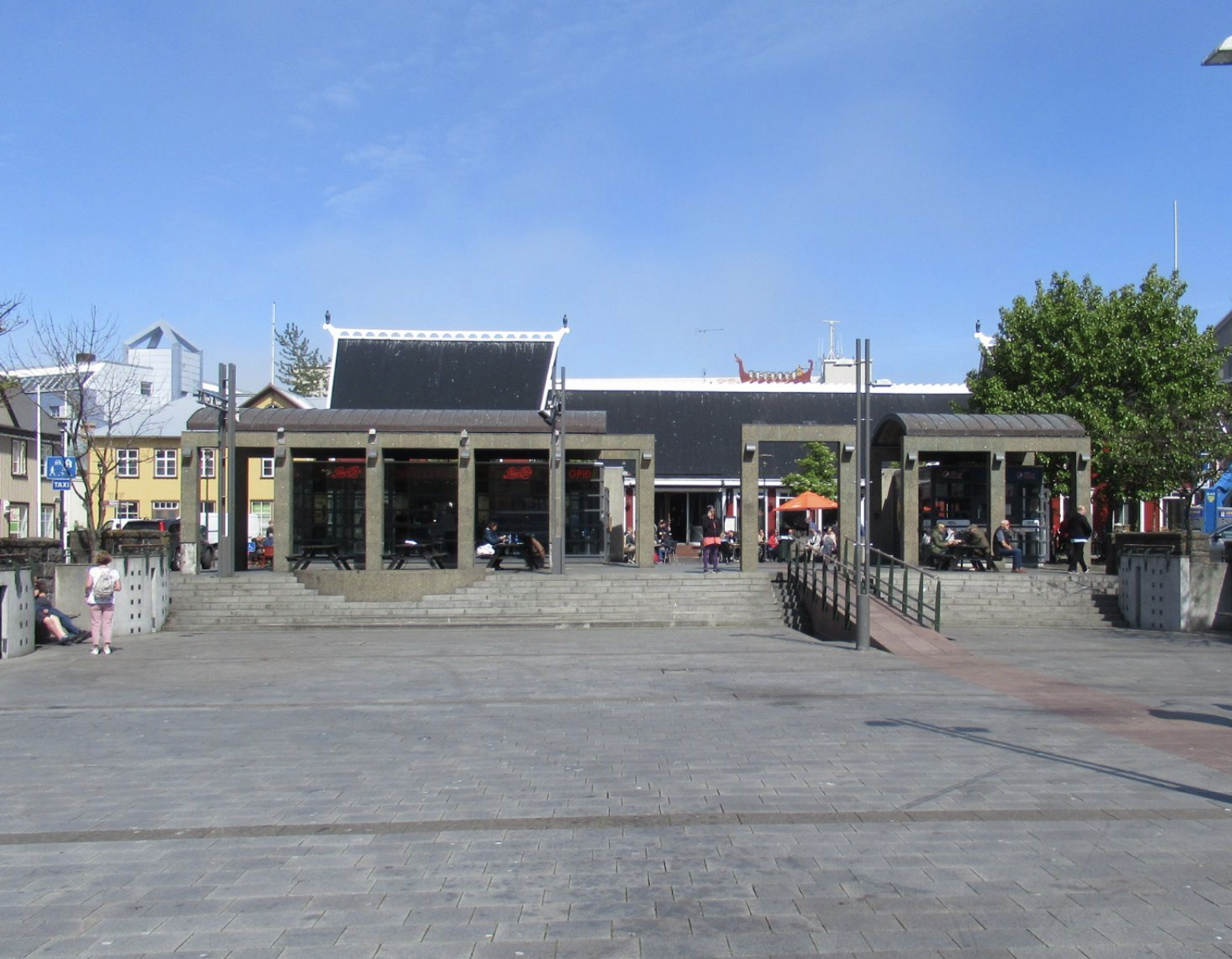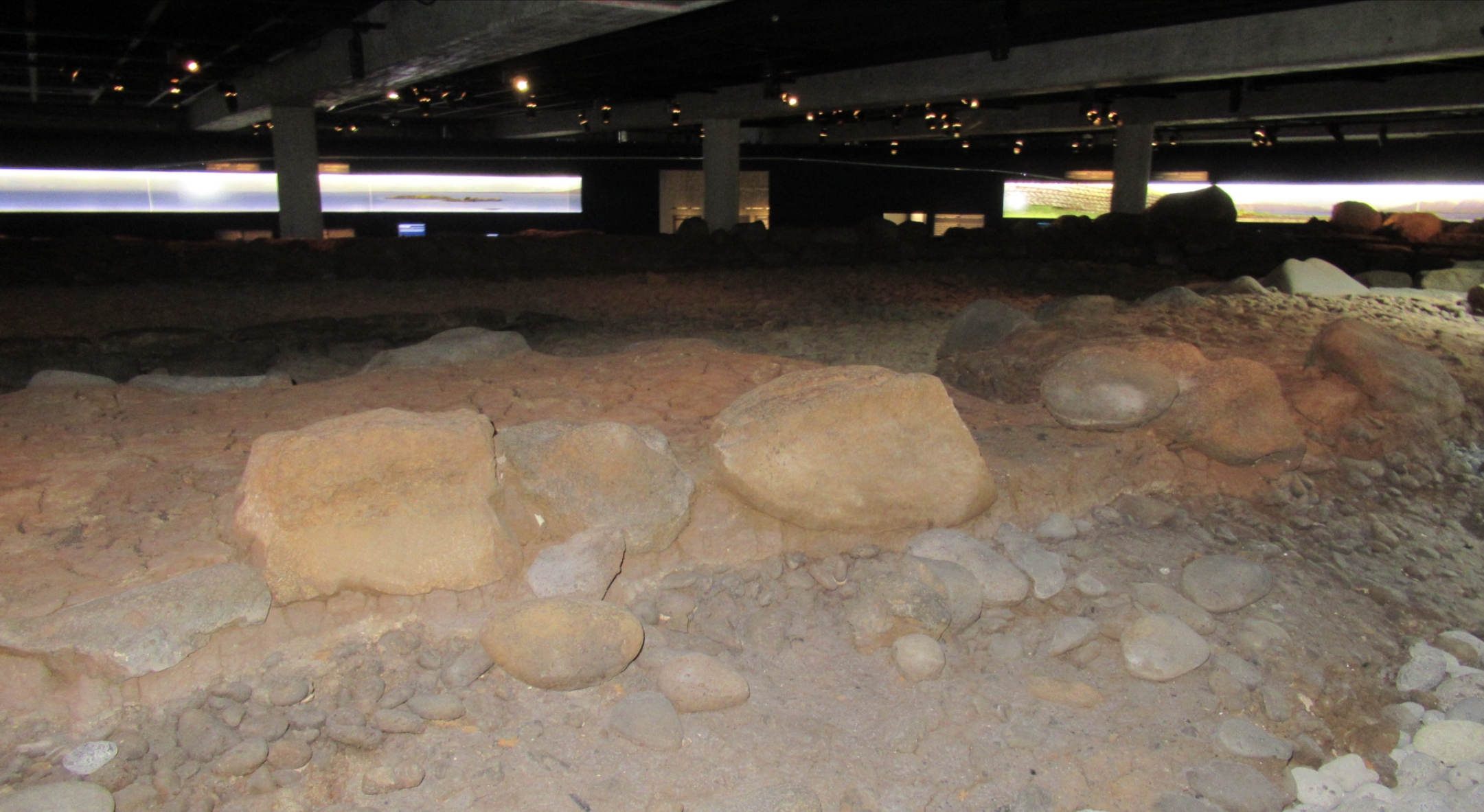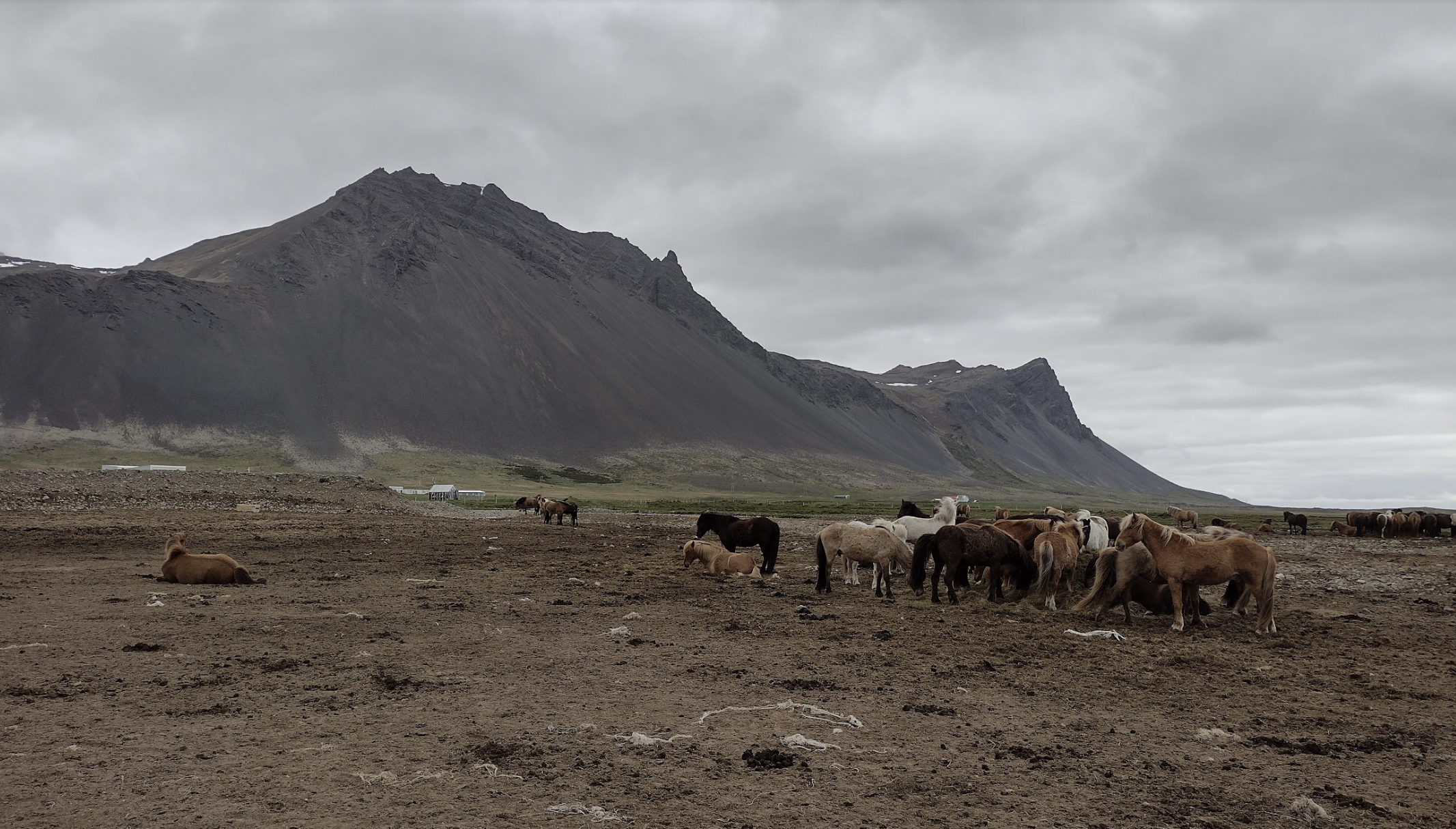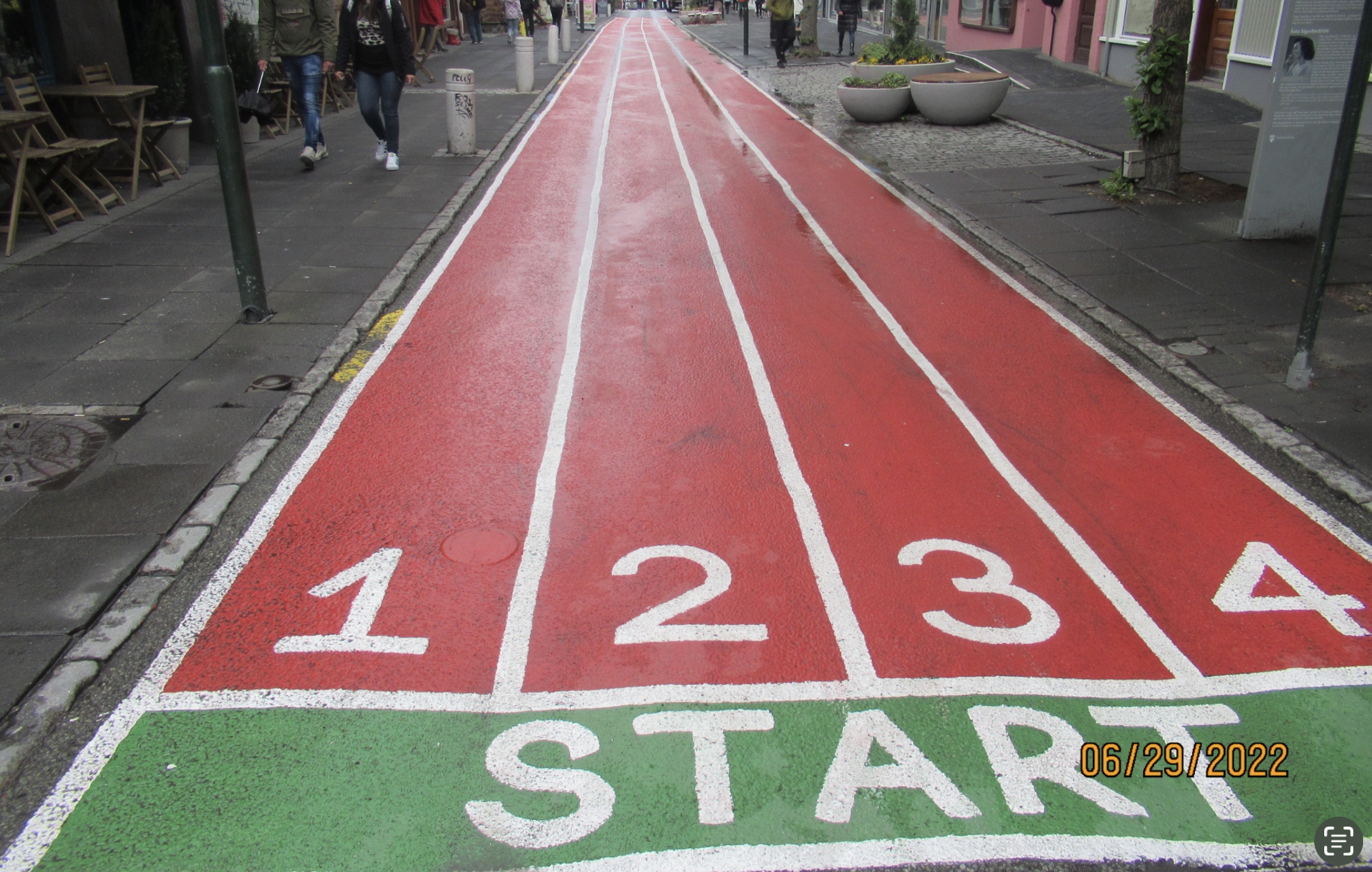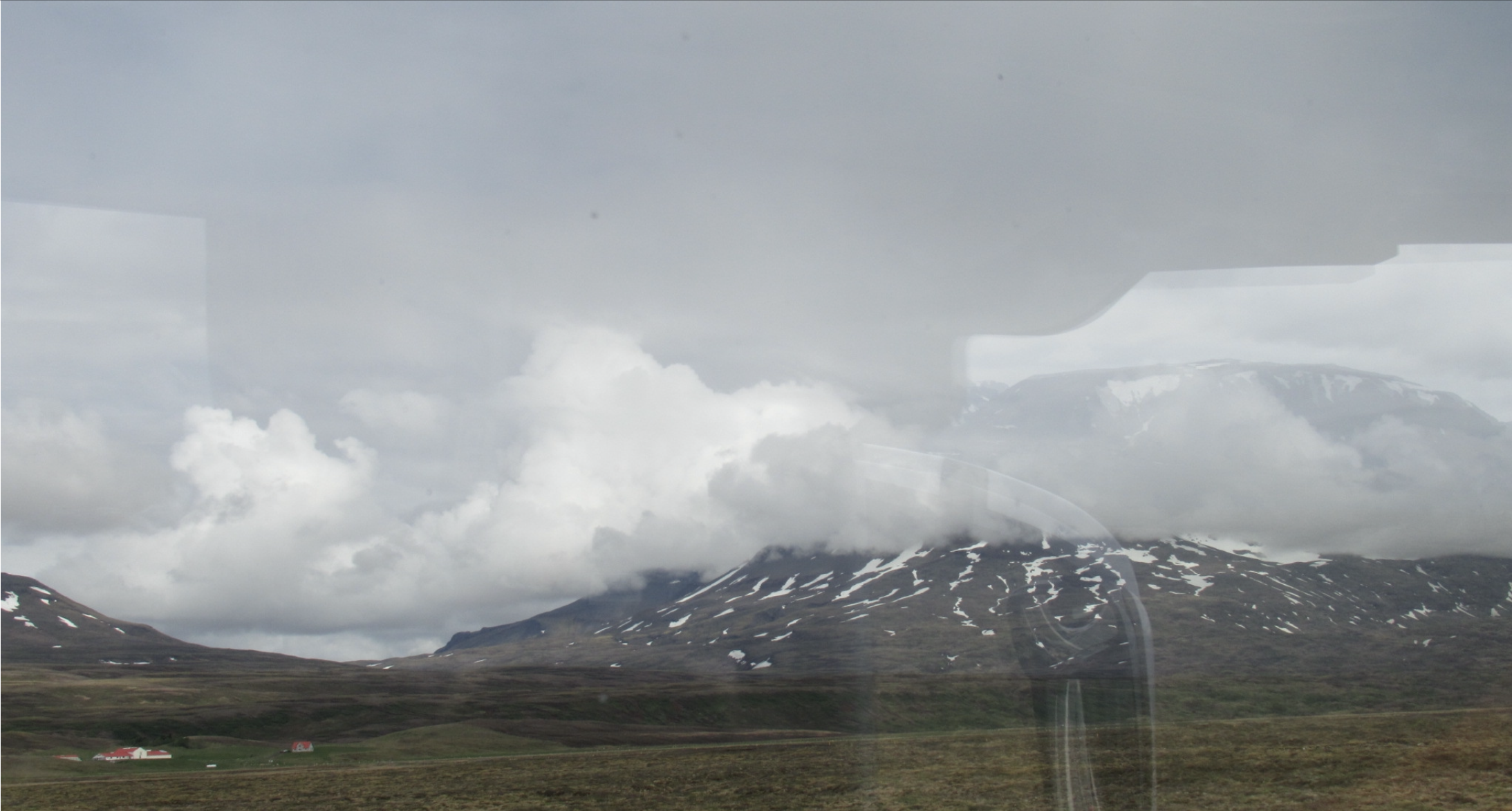While preparing for the trip, I pored over maps, noting which landmarks I wanted to see, using a mapping app to create walking routes from one place to the next, comparing the travel time taking public transportation vs. walking. All this activity had the effect of making the place large in my mind. Had I paid closer attention to the estimated timing for the various routes around Central Reykjavik, I would have noticed that almost nothing we wanted to see in that area was more than ten minutes by foot from anything else. This began to sink in as we walked. It gave Reykjavik a cozy feeling.
We walked from the Grai Kotturinn to our first stop on this walking tour, Ingólfstorg Square. It was at the beginning of peak tourist season, so there weren’t many people in the streets. There were tourists enough around, though. I heard American-accented English, British-accented English, Danish, Swedish, German, Dutch, and one French-speaking group. Many family groups, many with little children.
Betsy navigated and read aloud from the book as we went. The story of Ingólfurstorg Square is that Ingólfur Arnarson, considered the first Nordic settler of Iceland, threw two carved wooden pillars overboard as he approached Iceland by sea with the intention of settling wherever the gods washed them ashore. The picture that comes to mind is of a sea captain tossing these pillars into the ocean, watching where they went, and following. According to the legend, that is not what happened. He left the pillars to float through the ocean while he himself located a likely spot to establish a temporary settlement along the coast, then sent out people to find the pillars. It took a couple of years.
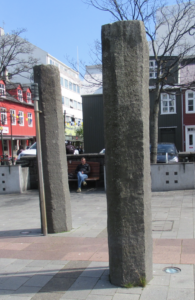
Once located, he did indeed establish a farm on that spot, calling it “Reykjavik,” meaning “smoky bay” for the smoke coming out of geothermal vents in the area. The land has been built up over the centuries and the place where those pillars washed ashore is now well inland. Two stone pillars stick out of the large smooth plaza to represent them.
The first thought that came to mind when we arrived there was, “What a great place for skateboarding!” In fact, that is exactly what it is meant to be. The area had been built and rebuilt and rebuilt again until this last iteration. There were no skateboarders there at the time.
As we stood looking at the landmark/skateboard plaza, I heard a familiar squawk, squawk, squawking. It was exactly the same squawking I had just left behind in New Jersey! My ears led me to young starlings, the little birds hopping after mommy, screaming “feed me” as she led them around, teaching them how to look for food.
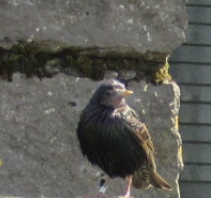
In my excitement encountering something so familiar, I took several pictures. However, I would subsequently meet them again and again since, like starlings everywhere, Icelandic starlings are resilient, adaptable, and fertile.
The temperature was in the 50s Fahrenheit (10s Centigrade). It was incongruous to see people dining outdoors at restaurants around the plaza. Wasn’t it too chilly to be eating outside? It didn’t take very long for us to realize it was emphatically NOT too cold to eat outside in these temperatures, and we would be doing so ourselves soon enough.
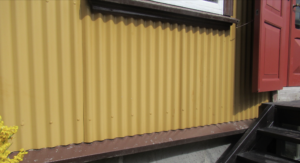 Strolling around, Rick Steves’ narrative noticed the corrugated metal siding of houses throughout the city. He mentions it in only in passing, but it really drew my attention. What do you use to build homes in a place that is subject to earthquakes, volcanoes, thermal venting, and temperatures low enough to freeze water into solid blocks of ice? The frames of buildings, the “bones,” can be a variety of materials. But the exteriors need to be practical and strong enough to withstand all sorts of climactic insults. Corrugated metal, easily maintained and painted, fits the bill. Almost all the buildings we walked by in Iceland had corrugated metal exteriors, many colorfully painted to create a festive atmosphere. It gives the city a distinctive look unlike any other I’ve ever seen.
Strolling around, Rick Steves’ narrative noticed the corrugated metal siding of houses throughout the city. He mentions it in only in passing, but it really drew my attention. What do you use to build homes in a place that is subject to earthquakes, volcanoes, thermal venting, and temperatures low enough to freeze water into solid blocks of ice? The frames of buildings, the “bones,” can be a variety of materials. But the exteriors need to be practical and strong enough to withstand all sorts of climactic insults. Corrugated metal, easily maintained and painted, fits the bill. Almost all the buildings we walked by in Iceland had corrugated metal exteriors, many colorfully painted to create a festive atmosphere. It gives the city a distinctive look unlike any other I’ve ever seen.
We followed Steves’ walking directions (at one point finding ourselves in a private citizen’s driveway!), eventually ending up at Lake Tjornin, a beautiful park in the middle of Reykjavik. The weather was pleasant. Families strolled with toddlers and children in baby carriages. We sat and relaxed. As I nibbled on a granola bar, a crumb dropped on the ground on front of me. A swarm of pigeons and ducks came begging for food. One little duck was so charming, standing at my feet, quacking so sweetly and politely, I gave him a couple of more crumbs of my granola bar. Probably shouldn’t have, but I couldn’t say no. There were three whooper swans on the lake who seemed to be playing some kind of game, flying fast and low over the water, stopping and floating around, then doing it again to another part of the lake.
After relaxing and watching swans and children play, it was time to check in. We walked by the Monument to the Unknown Bureaucrat nearby, and headed back to the luggage locker to retrieve our suitcases and go to the hotel.
